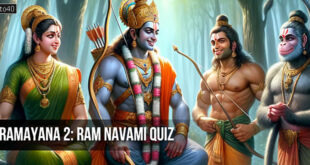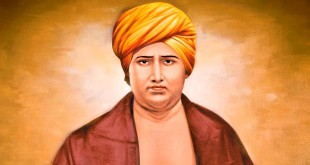Chandrayaan 3 Science Quiz: Join us on a journey of exploration and answer fascinating questions about lunar missions, space technology, and celestial wonders.
Chandrayaan 3 Science Quiz:
ISRO is once again ready with another space adventure. Chandrayaan-3 is a follow-on mission to Chandrayaan-2 to demonstrate end-to-end capability in safe landing and roving on the lunar surface. It was launched by LVM3 from SDSC SHAR, Sriharikota on July 14, 2023.
Take this quiz below to test your knowledge about ISRO’s attempt to name India the 4th country to land spacecraft on the moon
01. What is the key difference in the landing strategy between Chandrayaan-2 and Chandrayaan-3?
- Use of a more advanced orbiter
- Introduction of a new type of rover
- No orbiter is included in Chandrayaan-3
- Use of only one propulsion engine
Answer 01:
Explanation: Unlike Chandrayaan-2, Chandrayaan-3 does not include an orbiter, as the Chandrayaan-2 orbiter is still operational and will continue to support the mission.
02. Which type of rock samples are Chandrayaan-3’s instruments particularly interested in analyzing?
- Igneous rocks
- Sedimentary rocks
- Lunar regolith
- Metamorphic rocks
Answer 02:
Explanation: Chandrayaan-3’s instruments are focused on analyzing the lunar regolith, the layer of loose, fragmented material covering the Moon’s surface, to better understand its composition.
03. How does Chandrayaan-3 communicate with Earth?
- Direct communication via Earth antennas
- Through the Mars Orbiter Mission
- Using the Chandrayaan-2 orbiter as a relay
- Through a dedicated communication satellite
Answer 03:
Explanation: Chandrayaan-3 communicates with Earth using the Chandrayaan-2 orbiter as a relay, ensuring data transmission back to ISRO.
04. What is the significance of the Moon’s south pole, the target area for Chandrayaan-3?
- It has the longest day on the Moon
- It is the hottest region on the Moon
- It is rich in water ice and less explored
- It is the flattest region on the Moon
Answer 04:
Explanation: The Moon’s south pole is significant because it is rich in water ice and remains largely unexplored, making it a key area for scientific research and potential future human exploration.
05. Which space agency assisted ISRO in certain aspects of the Chandrayaan-3 mission?
- NASA
- ESA (European Space Agency)
- Roscosmos
- JAXA (Japan Aerospace Exploration Agency)
Answer 05:
Explanation: The European Space Agency (ESA) provided critical support for the Chandrayaan-3 mission, including tracking and communication assistance.
06. What was the launch site for Chandrayaan-3?
- Sriharikota
- Thumba
- Bangalore
- Ahmedabad
Answer 06:
Explanation: Chandrayaan-3 was launched from the Satish Dhawan Space Centre in Sriharikota, the primary launch site for ISRO missions.
07. What is the launch date for Chandrayaan 3 mission?
- 24 July, 2023
- 14 July, 2023
- 13 July, 2023
- 04 July, 2023
Answer 07:
Explanation: Chandrayaan-3 is the third lunar exploration mission by the Indian Space Research Organisation (ISRO) to be launched on 14 July 2023.
08. The Chandrayaan 3 mission’s rover is known as
- Vikram
- Bheem
- Pragyaan
- Dhruv
Answer 08:
Explanation: According to the ISRO Chairman, the names Vikram, for the Lander, and Pragyan for the Rover, will be carried over to honour the Chandrayaan 2 mission.
09. The mission life of the Lander and Rover equal to
- 14 Earth Days
- 24 Earth Days
- 16 Earth Days
- 12 Earth Days
Answer 09:
Explanation: The mission life of the lander, according to ISRO authorities, is one lunar day, which is equivalent to 14 days on Earth.
10. Which launcher is used for Chandrayaan-3?
- GSLV
- LVSM
- GSLV-Mk3
- PSLV
Answer 10:
Explanation: The chosen launcher for Chandrayaan-3 is GSLV-Mk3, which will position the integrated module in an Elliptic Parking Orbit (EPO) measuring approximately 170 x 36500 km in size.
11. The mission objectives of Chandrayaan-3
- To demonstrate Rover roving on the moon and
- To demonstrate a Safe and Soft Landing on Lunar Surface
- To conduct in-situ scientific experiments.
- All of the above
Answer 11:
Explanation: ISRO has set three main objectives for the Chandrayaan-3 mission, which include:
- Getting a lander safe and soft landing on the surface of the Moon.
- Observing and demonstrating the rover’s loitering capabilities on the Moon
- In-site scientific observation makes scientific experiments on the chemical and natural elements, soil, water, etc. available on the surface of the Moon to better understand and practice the composition of the Moon. Interplanetary refers to the development and demonstration of new technologies required for missions between two planets.
12. How much did the Chandrayaan 3 mission cost?
- 1200 Crores
- 960 Crores
- 600 Crores
- 540 Crores
Answer 12:
Explanation: Chandrayaan 3 mission costs lesser than the Chandrayaan 2 mission which was more than 960 crores.
13. What is the total weight of Chandrayaan 3?
- 4,100 kilograms
- 3,900 kilograms
- 2,190 kilograms
- 5,200 kilograms
Answer 13:
Explanation: The propulsion module, alone, weighs 2,148 kg, and the lander and the rover are both in the lander module, which weighs 1,752 kilograms.
14. What is that one thing in Chandrayaan 3 and not in Chandrayaan 2?
- Laser Doppler Velocimeter (LDV)
- Laser-based Interferometry
- Ultrasonic Doppler methods
- Molecular Tagging Velocimetry
Answer 14:
Explanation: The lander for Chandrayaan-3 will have only four throttle-able engines, equipped with a Laser Doppler Velocimeter (LDV).
15. Which of the following is missing in Chandrayaan 3?
- Rover
- Lander
- Orbiter
- None of the above
Answer 15:
Explanation: According to ISRO, Chandrayaan-2, was fitted with the lander Vikram, an orbiter and rover Pragyan, whereas Chandrayaan-3 will carry only a rover and a lander. Also, the orbiter that was launched with Chandrayaan-2 will still be in use.
16. What will be the design of the Propulsion Module?
- Box-like structure with a solar panel on the side with a cylinder on top
- Rectangular structure with solar panels on all sides
- Cube with a sphere on top
- None of the above
Answer 16:
Explanation: The Propulsion Module is a box-like structure with a huge solar panel on one side and a massive cylinder on top. The cylinder, known as the Intermodule Adapter Cone, will serve as the lander’s mounting framework.
17. Who is the director of the Chandrayaan 3 mission?
- Veeramuthuvel
- M Vanitha
- Ritu Karidhal
- K. Sivan
Answer 17:
Explanation: Ritu Kharidhal is a prominent scientist at the Indian Space Research Organisation (ISRO). She will be leading the launch of Chandrayaan-3 this year.
18. Where will Chandrayaan 3 land on the moon?
- Near the South Pole
- Near the North Pole
- In the equatorial region
- None of the above
Answer 18:
Explanation: The objective of this mission is to explore the South Pole of the moon. This is because the south pole of the moon is rich in water ice, which is a valuable resource for future lunar exploration. The south pole is also less explored than the north pole, so there is a lot of scientific potential in landing there.
19. What are the challenges that ISRO will face in the Chandrayaan 3 mission?
- The lunar surface is very harsh, and the lander and rover will need to be able to withstand extreme conditions.
- The landing site is near the south pole of the moon, which is a very remote and unexplored region.
- The lander and rover will need to be able to communicate with Earth, but the moon’s atmosphere is very thin, which will make communication difficult.
- All of the above.
Answer 19:
Explanation: The Chandrayaan 3 mission will face a number of challenges, including the harsh lunar surface, the remote landing site, and the difficult communication conditions.
20. Which country is the fourth country to successfully land a spacecraft on the moon?
- China
- India
- Russia
- USA
Answer 20:
Explanation: The first three countries to successfully land a spacecraft on the moon were the United States, Russia, and China. India became the fourth country to do so on September 7, 2019, when the Chandrayaan 2 lander Vikram successfully touched down on the lunar surface.
21. What are the scientific instruments that will be carried by the lander and rover in Chandrayaan 3?
- Surface science instruments
- Atmospheric science instruments
- Water science instruments
- All of the above
Answer 21:
Explanation: The Chandrayaan 3 mission will carry a variety of scientific instruments to study the moon. These instruments will be carried by the lander and rover, and they will study the composition and structure of the lunar surface, the composition and dynamics of the lunar atmosphere, and the search for water ice on the moon.
22. What is the landing schedule for Chandrayaan 3?
- August 29, 2023
- August 25, 2023
- August 23, 2023
- August 24, 2023
Answer 22:
Explanation: Chandrayaan-3, is all set to make a soft and successful landing on the south polar region of the Moon around 6.04 pm today, August 23.
23. How did Chandrayaan-2 welcomed Chandrayaan-3?
- Hello Buddy!
- Hi Buddy!
- Welcome Buddy!
- Hey Buddy!
Answer 23:
Explanation: ISRO informed that the Chandrayaan-2 orbiter, which has been in the lunar orbit, has established a connection with the Chandrayaan-3 lander module Vikram with the rover in its belly.
24. How much did the Chandrayaan-3 mission cost?
- $74 Million
- $65 Million
- $72 Million
- $58 Million
Answer 24:
Explanation: According to the former Chairman of ISRO, K Sivan, the mission has an estimated total cost of around $74 million.
25. Who is the Rocket Woman Behind Chandrayaan 3 Mission?
- Moumita Datta
- Ritu Karidhal
- Nandini Harinath
- Tessy Thomas
Answer 25:
Explanation: Ritu Karidhal is the senior scientist, also known as the ‘Rocket Woman of India’. She successfully led the Chandrayaan-3 mission along with other scientists.
26. At what time did Lander Vikram touch the Lunar Surface?
- 6:02 PM IST
- 6:04 PM IST
- 6:05 PM IST
- 6: 06 PM IST
Answer 26:
Explanation: The powered descent commenced around 5.45 p.m. and a soft landing took place around 6:04 p.m. IST on August 23, 2023.
27. August 23 will be celebrated as
- Space Day
- Chandrayaan 3 Day
- ISRO Day
- National Space Day
Answer 27:
Explanation: PM Modi while addressing ISRO scientists announced the commemoration of Chandrayaan 3 as National Space Day on August 23.
28. What name is given to the Chandrayaan 3 landing spot?
- Shiva-Shakti Point
- Shiva-Parvati Point
- Shiva-Shambhu Point
- Shiva-Bhakti Point
Answer 28:
Explanation: PM Narendra Modi announced that the point where the Chandrayaan-3 lander touched down on the lunar surface on Wednesday will be named Shiv Shakti.
29. Where is Jawahar Point on the moon?
- Near the Equator
- Polar Regions
- Shackleton Crater Region of the moon
- South Pole
Answer 29:
Explanation: Jawahar Point or Jawahar Sthal is a region near the Shackleton Crater given to the landing site of Chandrayaan-1. It was suggested by A.P.J Abdul Kalam.
30. ChaSTE Payload sent the message about
- Air pressure on the moon
- Temperature Profile of Top Soil
- Ice and Water level on the moon
- None of the above
Answer 30:
Explanation: ChaSTE (Chandra’s Surface Thermophysical Experiment) measures the temperature profile of the lunar topsoil around the pole, to understand the thermal behaviour of the moon’s surface.
31. What is the name of the first female robot to be part of India’s first manned space mission?
- Sangamitra
- Gangammitra
- Vyommitra
- Gaganmitra
Answer 31:
Explanation: Vyommitra is a female-looking spacefaring humanoid robot being developed by the Indian Space Research Organisation (ISRO).
32. Which chemical element is found on Chandrayaan 3?
- Titanium
- Sulphur
- Magnesium
- Chlorine
Answer 32:
Explanation: According to Space.com one instrument aboard the Chandrayaan-3 mission’s moon rover Pragyan has found surprising traces of sulfur within the lunar south pole’s soil.
33. What does RAMBHA-LP measure on the Moon?
- Sulphur
- Element
- Plasma
- Magnesium
Answer 33:
Explanation: First in-situ measurements of the surface-bound Lunar plasma environment over the south polar region have been carried out by the Radio Anatomy of Moon Bound Hypersensitive ionosphere and Atmosphere – Langmuir Probe (RAMBHA-LP) payload onboard Chandrayaan-3 Lander.
 Kids Portal For Parents India Kids Network
Kids Portal For Parents India Kids Network







